Pre-Season Maintenance & Checklist
We’ve been fortunate to have a long summer this year, but winter is indeed closing on us quickly. You should have already budgeted for and planned to do at least the basic winter maintenance. Heck, you may already be in progress or finished with everything for your winter daily by now. For those who haven’t started, now is the last good opportunity to tackle anything and everything while the weather is still in your favor. A good seasonal maintenance list is:
- Oil service
- Inspect brake pads and rotors
- Inspect ball joints, cv boots, and suspension bushings
- Confirm heater is working as it should and there are no leaks/issues with the heater core
- Confirm blower motor works on all settings and defrost works
- Replace windshield wiper blades
- Fill windshield fluid reservoir with de-icer rated for below-freezing temperatures
- Check headlights, tail lights, blinkers, and fog lamps
- Confirm battery is new or working as it should
SHOP ASSEMBLED BY ECS SERVICE KITS
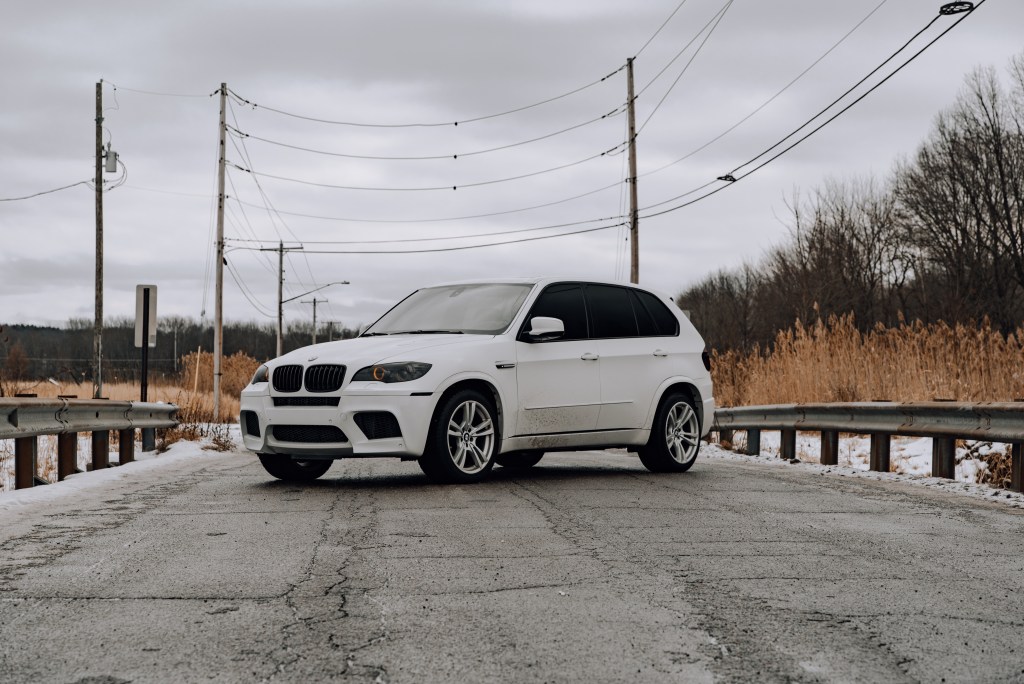
Tires
A common misconception is that All-Season tires are perfectly fine in the winter months. Even in climates that may not experience snow as much as we do here in North East Ohio, All-Season tires can be out of their element in freezing temperatures. All-Season tires are designed to work somewhat aptly in all conditions, not excelling in any temperature range. They tend to be too hard in cold weather to provide the traction you need and certainly don’t have the tread pattern needed to deal with snow and wet slush on the road. The best thing you can do for your car is to buy a set of winter-rated tires like snow tires or snow-rated all-terrain tires. Your traction from a stop is greatly improved, even in snow, and stopping distances can be reduced up to 30% according to data from Bridgestone tire specialists.
Winter tires will help keep you out of danger in quick-reaction situations as well as allow you to drive more confidently in conditions that can be impassable for summer or all-season tires. If you haven’t picked up a set of winter tires yet, you can always grab a set of dedicated winter wheels and tires right here at ECS. Our wheel and tire program is perfect for ordering the wheels you want to daily through the worst weather and receiving them with your choice of winter tires already mounted and balanced. Simply throw them on your car and enjoy winter driving confidence without a trip to the tire shop.
Supplies and Emergency

There are a few important items to keep in your car during the winter months. From things you’ll use every day to emergency supplies you hope you never need, it’s a good idea to have all of this list in your car this winter:
Large Snow Brush: Critical for clearing off your car after a snowfall, scraping ice from your windows, and clearing out buildup in wheel wells and wheel spokes.
Jump Pack: The last thing you want is to be stranded in the winter with a dead battery. Even with a relatively new battery, sometimes the freezing temperatures just prevent it from giving all the cold cranking amps you need. With a Micro Jump Start, you can give it the extra juice you need to get your car running. It fits conveniently in your glove box, center console, or seatback pocket and can keep you out of a pickle.
Provisions: Imagine the worst-case scenario where your car slides off the road, late at night, in a low-traffic area. Maybe you have cell service to call for a tow, maybe you don’t. In this absolute worst-case situation, your best bet is to stay in the car. With an emergency blanket, some protein bars, and water in a thermos, you’re all set until help comes. It may be hours or, in the case of some extreme situations, days before help comes. Keeping a blanket in the car as well as high-protein, non-perishable food, and an insulated water bottle to keep it from freezing could be the difference between an extreme inconvenience and a life-or-death event. Don’t think it can happen? Here’s a story from 2019 about someone who had to survive off of Taco Bell hot sauce packets:
https://people.com/food/man-survives-taco-bell-hot-sauce-packets-trapped-snow/
AWD vs. FWD vs. RWD

In ye olden days, there wasn’t much choice for buyers when it came to drivetrain layouts. Most of the cars on the road were rear-wheel drive, front-engine, setups, and the tires were certainly not as advanced as they are today. This resulted in the age-old trick of adding weight to the rear of your vehicle.
In modern cars, especially AWD and FWD layouts, this is not ideal, as it can upset the weight balance of your car and cause handling changes during an emergency reaction.
It’s also commonly believed that AWD is not just superior to FWD or RWD in the snow, but is almost invincible when the roads turn slick. This is half true. While AWD does help grant your car more traction from a takeoff, it won’t help you stop any better than FWD or RWD.
More importantly, you aren’t much better off with an AWD car than you are with a FWD or RWD car, provided you have the right tires. AWD is better in many ways during winter conditions, but it isn’t a necessity when winter tires are used in a FWD or RWD car.
Between FWD and RWD, most would choose FWD for the tendency to understeer rather than oversteer. In personal experience, with a somewhat experienced driver, the ability to combat understeer with a little throttle from a RWD car is favored. In a FWD car, your wheels do both the steering and the power delivery, which causes a natural tendency to understeer or plow in a straight line, when traction is lost. It may be less of an issue with winter tires and a cautious driver, but someone with experience in a RWD car can generally prevent accidents and issues more effectively than anyone in a FWD car.
Warming Up Your Car
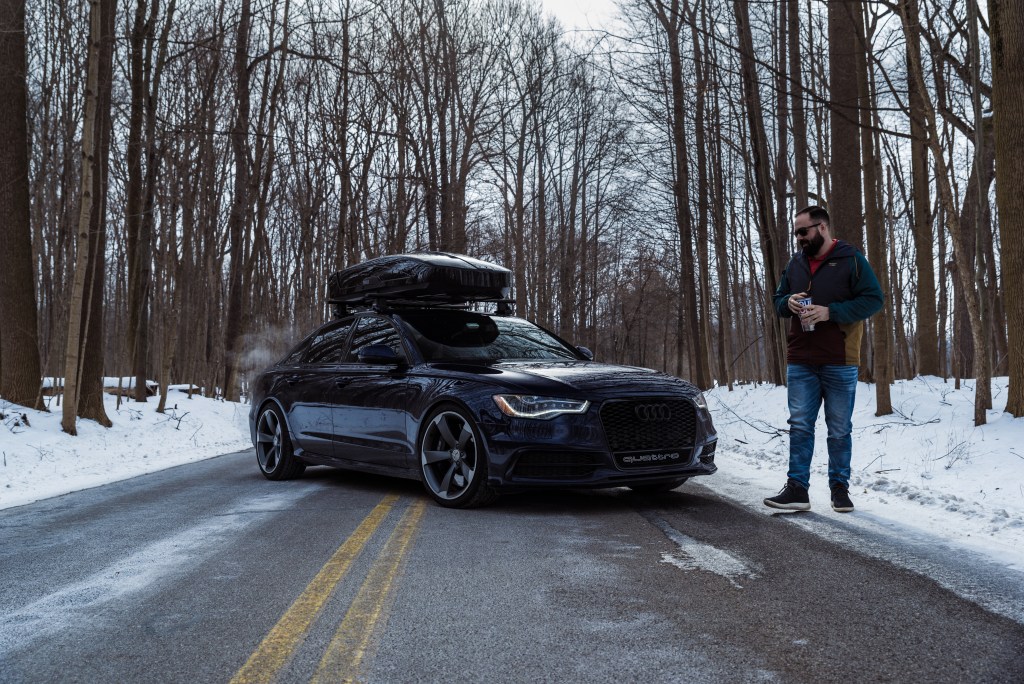
Ok, this one is hotly (pun intended) debated. We’ll list the reasoning for both sides of the argument and let you decide for yourself in this case.
Pro-warming: This is both more comfortable when you’re ready to depart on your commute or trip and more convenient as your defroster can clear all the windows of frost that would otherwise need to be scraped off by hand. Warming your car also allows your engine temperature to gradually climb rather than shocking the engine with a quick temperature change. When anything heats or cools rapidly, the structure of that material is put under immense stress. Warming your car (and engine) before setting off is generally advised, especially for diesel engines.
Anti-Warming: There is an argument against warming your car, believe it or not, and it’s backed by some science. Firstly, the least efficient your engine will ever be is on a cold start. Sitting and idling, especially with the heater running, means a much longer warm-up time to operating temperature, where your engine and emissions system are at their most efficient. Due to these facts, warming your car at idle in your driveway emits perhaps the greatest volume of harmful emissions your car can produce. The longer it sits warming up, the longer it will pollute at its highest output. Additionally, even many of our engineers are in the camp of ‘just drive it’ to warm it up. Unless you’re in a truly extreme environment, modern synthetic oils operate over a huge range of temperatures at effectively the same viscosity. While it is true that in the past, conventional oil was extremely thick in cold weather and carburetors didn’t like to operate properly in below-freezing temperatures, modern oils, and fuel injection make these concerns outdated. Your car is safe to drive from a cold start even in sub-freezing weather and it will warm up to operating temperature more easily while driving, thus producing a lower volume of harmful carbon emissions.
Like we said, on this one, you decide. There are good arguments for both. I turn my car on when I start clearing snow and leave when I’m finished. It’s a nice middle ground.
Regular Car Washes

Unpopular opinion: salt doesn’t rust cars, only careless owners rust cars. Having driven a Subaru (perhaps even more notorious for rusting than MK3s) every winter here for the past five years and never experiencing even the slightest rust problem, I can attest to the effectiveness of regular car washes during the winter. Generally, I wash my cars every other week in the summer. During the winter, I wash my car weekly. Sometimes more. It can be a huge pain, but the grind is worth it. A weekly visit to a touchless car wash that includes an underbody spray is almost essential. If you’re lucky enough to have a pressure washer and several buckets to fill with warm water, a quick spray down and shampoo isn’t an awful experience, even in the winter. The best thing you can do to prevent rust is to wash your car as often as possible. In my experience, that is once a week at a minimum. Whatever the cost is, it’s certainly less than extensive rust repair and the headaches that come from trying to unstick seized bolts that have welded themselves in place with rust.
Lights, Lights, Lights
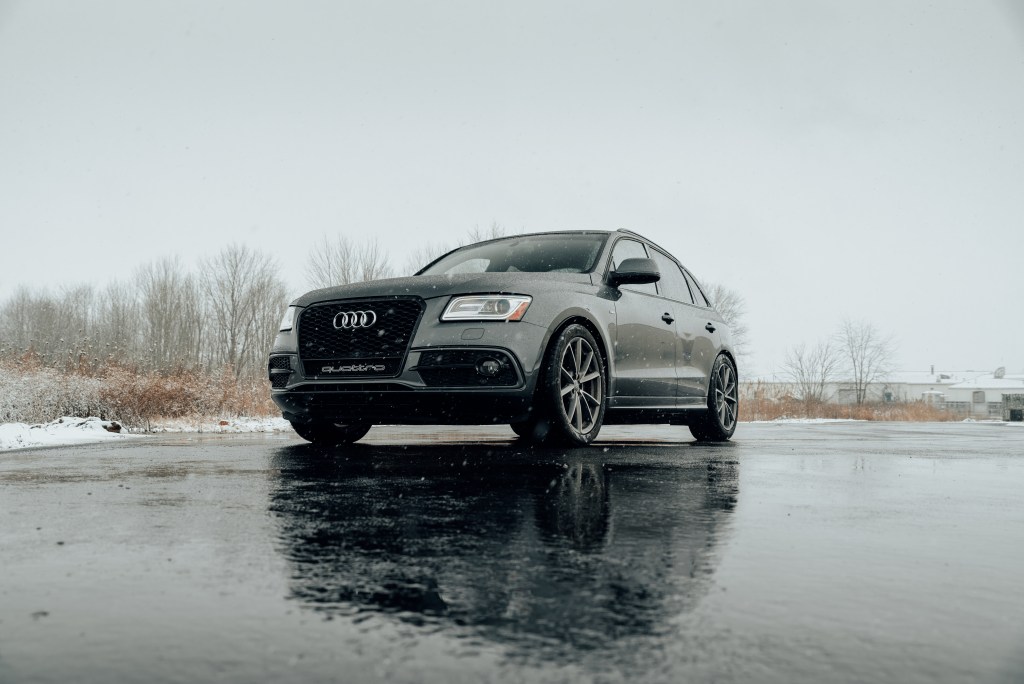
If you find yourself driving in whiteout conditions, one of the best things you can do is ensure you can see and others can see you. However, just like in fog, you don’t want to use your high beams. The light is directed almost entirely level with your car, which reflects off the snow and into your field of vision. That just makes things worse. The real solution is to use your low beams and fog lights if you have them. You could also benefit from an additional lighting setup, especially if this is your winter-only car, that can further illuminate your view in a way that doesn’t blind you and others. Low-mounted lights can help you keep track of the path immediately in front of you, while high-mounted lights can give you a farther field of vision that can cut through the blizzard. The farther you can see, the sooner you can react to anything ahead of you.
Good Winter Driving Habits
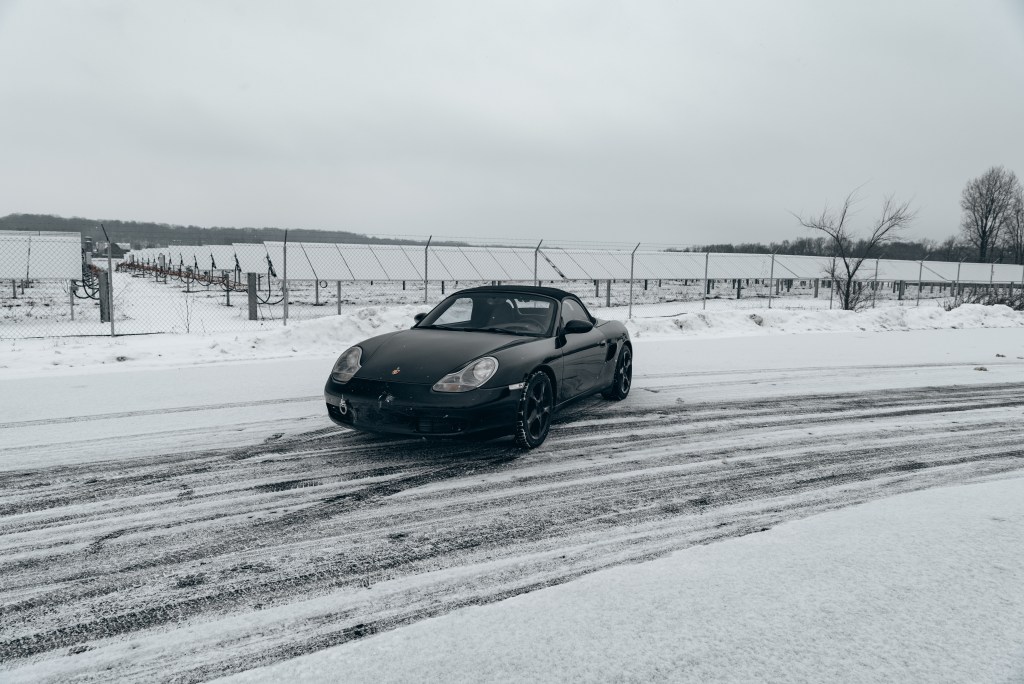
That last point brings us to our final tip, good winter driving habits. Be it on snow, ice, or just cold and wet roads, you should adjust your driving accordingly. The most important thing is to give cars ahead of you several seconds of space. In dry conditions, that is usually about two seconds. In snow or ice, you should triple it to be safe. A six-second following distance will give you enough time to react and slow down, even on slush or snow-covered roads.
When stopping, be gradual with your pedal. You don’t want to lock up the wheels, so just ease into the brakes slowly, pumping as you go, to prevent wheel lockup. If you do slide when braking, just keep the wheel pointed where you want to go, take your foot off the brake, and either let the car gain traction on its own or brace for impact.
A skilled driver can counter-steer a slide and induce some wheel speed with the throttle to gain some traction, but unless you are extremely practiced with these techniques, we suggest you just keep it in a straight line and feel it out.
Braking into a corner on snowy roads should be treated differently, too. While it’s best practice all the time to brake before the corner, not in the corner, I know most of us are guilty of riding the brakes through the corner. In snow, you want to do one thing at a time. Turning your wheels should be independent of accelerating or slowing, so make sure you’re not multitasking! Otherwise, you could find yourself sliding in the corner while braking too late or losing traction out of it when you hit the gas too early.
Don’t touch that cruise control, folks. I know it can be tempting on a long trip, but if you’re in snowy weather, you want to be in full command of your car. Cruise control doesn’t know if there’s a slick patch ahead of you, and the cruise control decides to increase throttle to maintain speed, which could spell a slippery disaster.
Better late than dead: slow it down. I mean, really, really, slow it down when you’re driving unplowed roads. Believe it or not, this is more directed towards regions that don’t receive a lot of snow. With no fleets of snowplows and salt trucks, even a little bit of accumulation can be enough to cause extremely slick conditions. As the snowy roads are driven, the resulting slush is easily packed into ice, which is nearly impossible to see before it’s too late. Just keep it slow and steady. Again, if you do feel a loss of traction while driving in a straight line, just keep the wheel steady and pointed in the direction you want to go. If you take your foot off the throttle and don’t touch the brakes, you’ll find traction soon after and avoid a slide.
Wrapping up:
This covers just about everything you need to know about winter driving, whether it’s your first time in a cold-weather climate or you’re a seasoned veteran. There’s something here to take away for everyone. As always, be safe, we love you and make sure you follow these tips to prepare yourself and your car for snowy commutes.

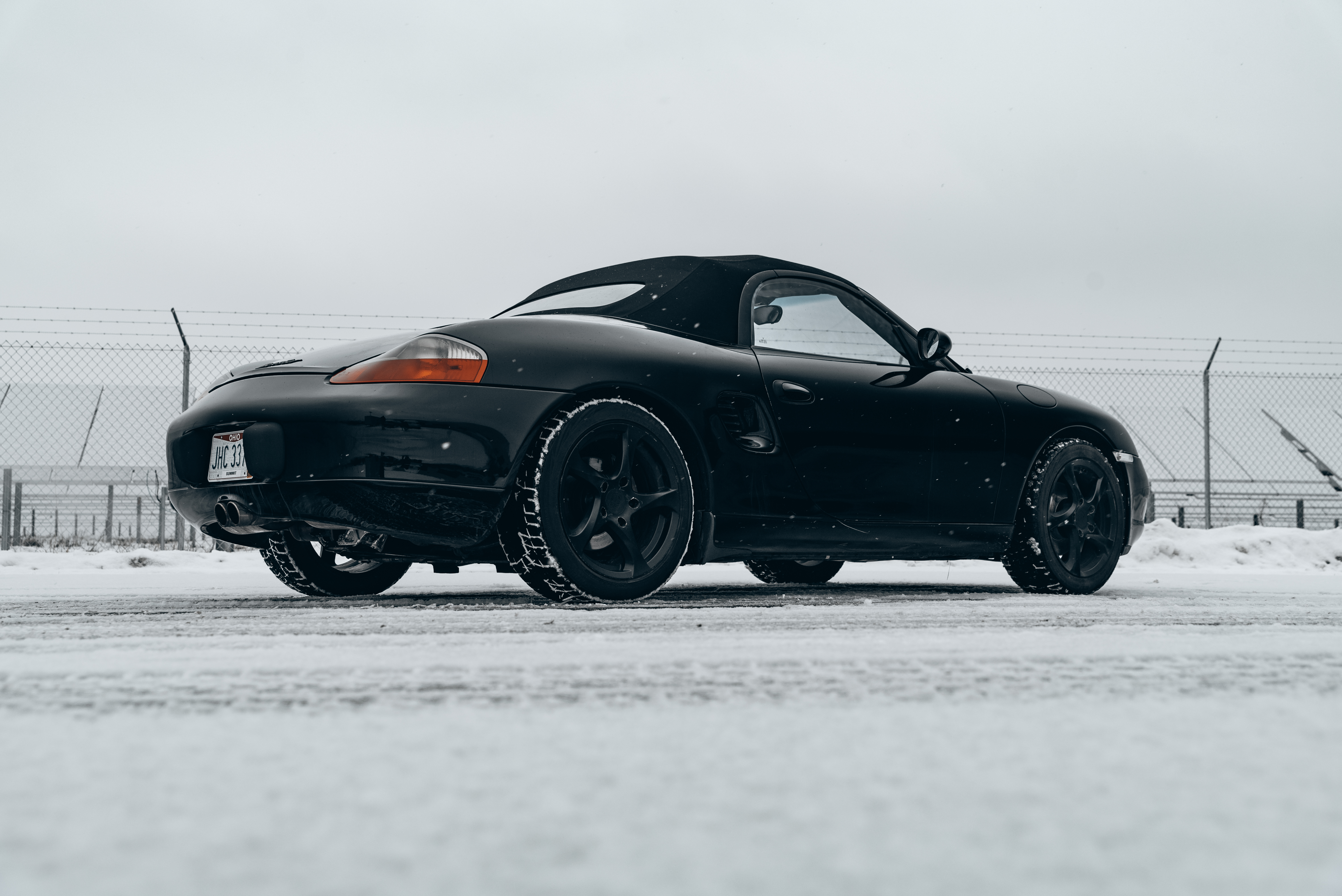

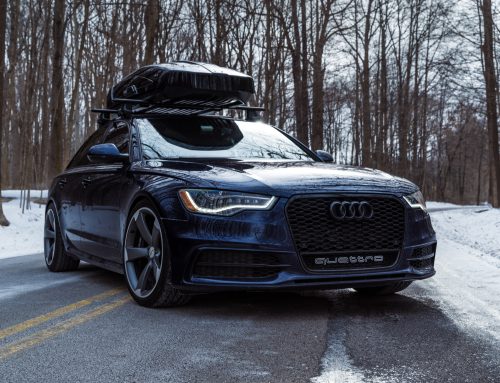

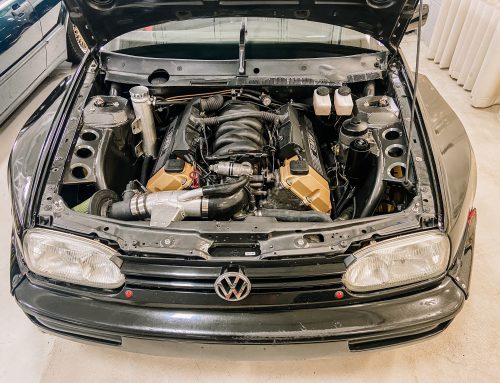

Modern ABS systems don’t require pumping of the brake pedal. Engine braking and easy pedal pressure are key.
Helpful and comprehensive, but the braking needed to be clarified for new drivers.
Thanks
True, though ABS can sometimes be too aggressive.
Agree.
The article doesn’t mention this, but it’s important for those in the warmer Southern states…
Many people don’t realize this: If you have a sporty car with “summer” performance rated tires, these tires are not meant to be driven in weather below 40-45 degrees Fahrenheit (check with your tire manufacturer for specifics). The reason is similar to what is described in the article regarding all-season tires in true freezing temperatures up North. Summer tire compounds become too hard below 40-45 degrees. This can make them unsafe and even dangerous in near freezing weather. Get a set of all-season tires if you’re going to drive in near or occasionally below freezing conditions in the South.
An excellent point!